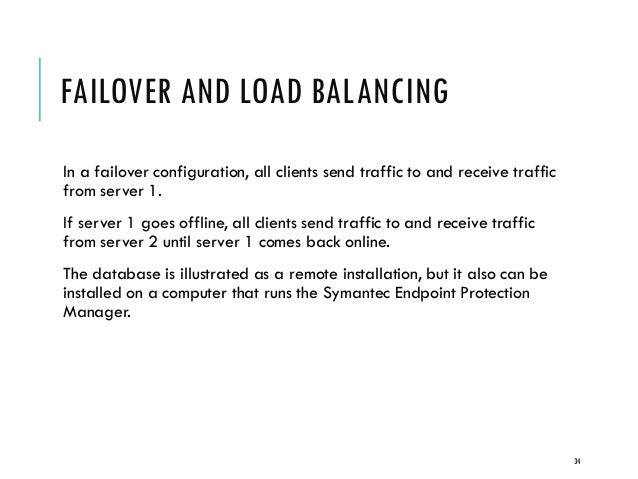How To Install Sepm With Sql Statement
To install Symantec Endpoint Protection Manager with a custom configuration. See. In the Management Server Configuration Wizard, click Custom configuration, and then click Next. If you have fewer than 500 clients, Symantec recommends that you click Default configuration. For versions of Symantec Endpoint Protection earlier than 14, if you have fewer than 100 clients, you should click Default configuration.
Once all of these have been installed, you can now install the Symantec Endpoint Protection Manager; SQL Server 2014 and Earlier 1. Execute the Microsoft SQL Server iso file to run the Setup wizard, 2. In Setup Role, keep the default option SQL Server Feature Installation and click Next, 3. In Feature Selection, select Management Tools. Next: SEPM - configure. In addition he would like to see if we can install the SEPM alongside Trends manager (i dont believe so) to help facilitate the above.
Click Install my first site, and then click Next. For versions of Symantec Endpoint Protection earlier than 14, you may first need to select the appropriate option for the number of clients in your environment, and then click Next. The following options are for advanced installations and do not apply to first-time installations of Symantec Endpoint Protection Manager. Site name. Server name.

Port numbers You should contact your network administrator before you make changes to the default Symantec Endpoint Protection Manager port configurations. The location of the Symantec Endpoint Protection Manager server data folder If there is not enough available free space on the drive on which Symantec Endpoint Protection Manager is installed, relocate the server data folder to an alternate drive.
How To Install Sql Developer
On the database selection screen, click Microsoft SQL Server database and then click Next. You can select the embedded database with a custom configuration. However, this step assumes that you select the SQL Server database. Check with your SQL database administrator to confirm whether or not the automatic database maintenance tasks should be enabled. Symantec recommends that you host SQL Server and Symantec Endpoint Protection Manager on separate physical servers. For information on supported versions of Microsoft SQL Server, see the.
Click Create a new database, and then click Next. Note: Using an existing database is considered an advanced installation option, and typically does not apply to new installations. On the Step One: Database Server Authentication screen, fill in the details for the SQL Server to which Symantec Endpoint Protection Manager connects, and then click Connect to database. If the database connection is successful, the Step Two: New Database Creation section becomes available. Under Step Two: New Database Creation, fill in the details to create a new database, and then click Next. For questions regarding either Database Server Authentication or Database Creation, contact your SQL Server database administrator. Enter company name, a password for the default administrator admin, and an email address.
Alternately, you can add details to use a specified mail server. Click Send Test Email. Once you verify that you receive the test email, click Next. Symantec Endpoint Protection Manager sends password recovery information and other important notifications to this email account, so you should not proceed with configuration if you do not receive the email.
It was 'in my blood', so to speak. Torrent model railroader index.
Create an encryption password, or choose to use a random password, and then click Next. This password is used to protect the communication between clients and Symantec Endpoint Protection Manager, and is stored in the Symantec Endpoint Protection Manager recovery file. Indicate whether you want to run LiveUpdate as part of the installation.

If you run LiveUpdate as part of a new installation, content is more readily available for the clients you deploy. Click Next You can also add the optional Partner Information, if a partner manages your Symantec licenses. Indicate whether you want Symantec to receive anonymous data, and then click Next to begin the database creation. After the database is created and initialized (which may take several minutes), click Finish. The Symantec Endpoint Protection Manager console logon screen appears if you leave the option checked to launch Symantec Endpoint Protection Manager. Once you log on, you can begin client deployment. You can find a configuration summary in the following location on the server where Symantec Endpoint Protection Manager is installed: ProgramFiles Symantec Symantec Endpoint Protection Manager tomcat etc SEPMConfigurationSummaryInfo.txt See.